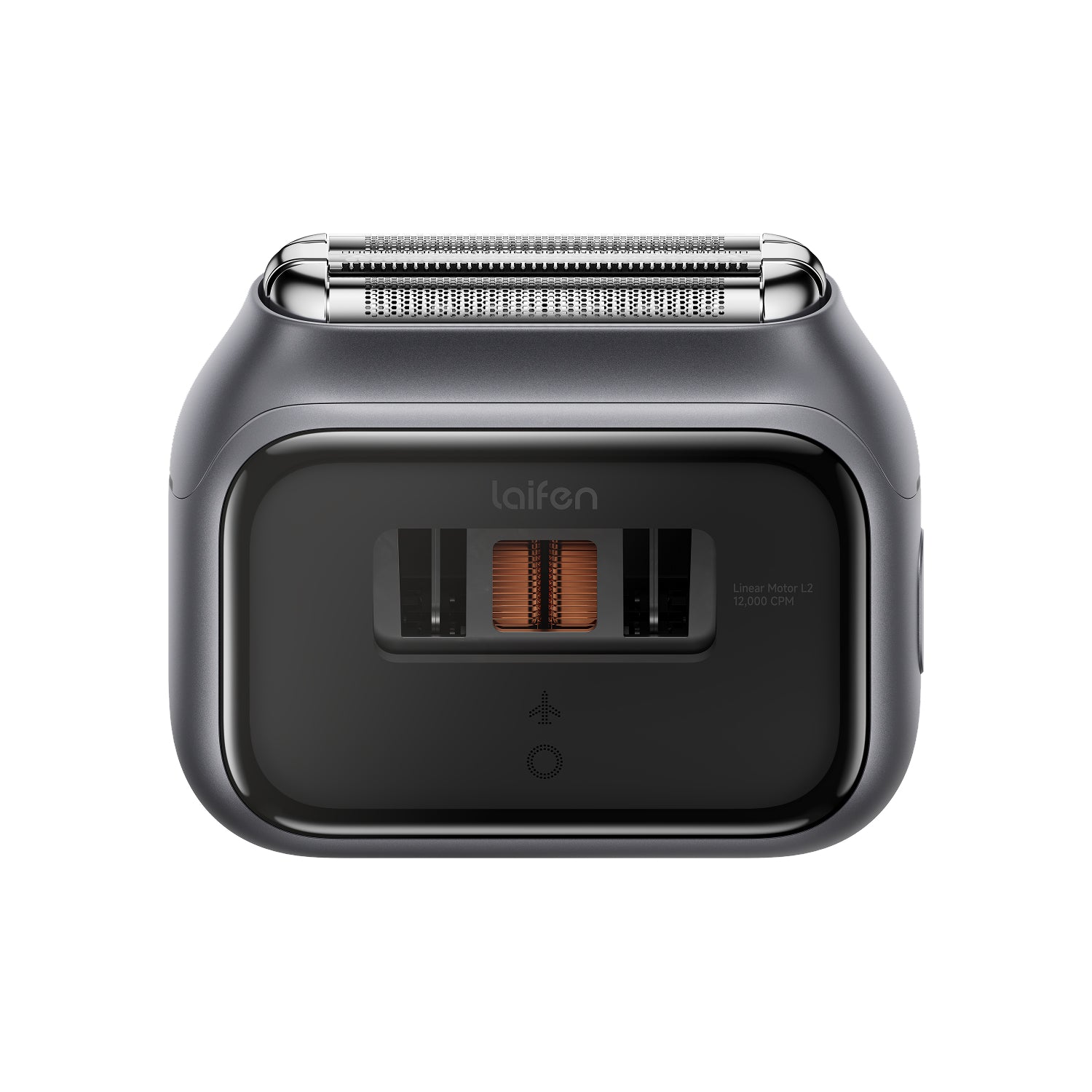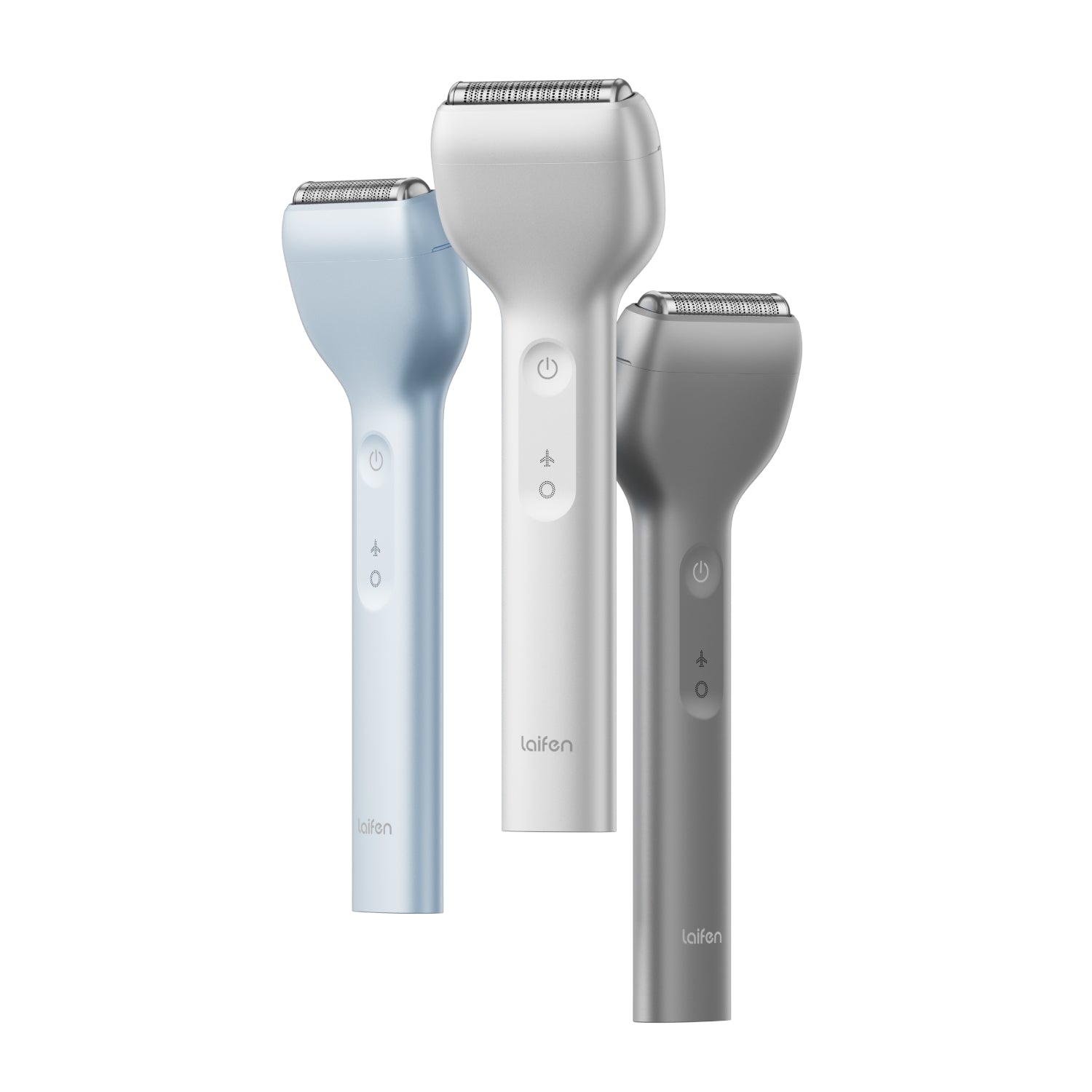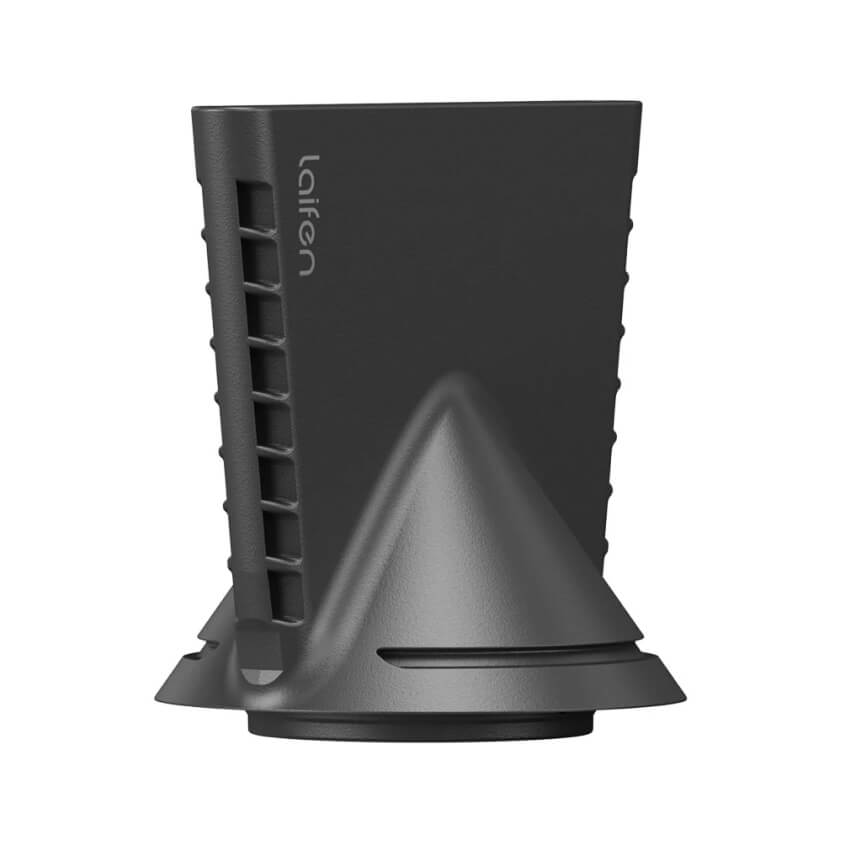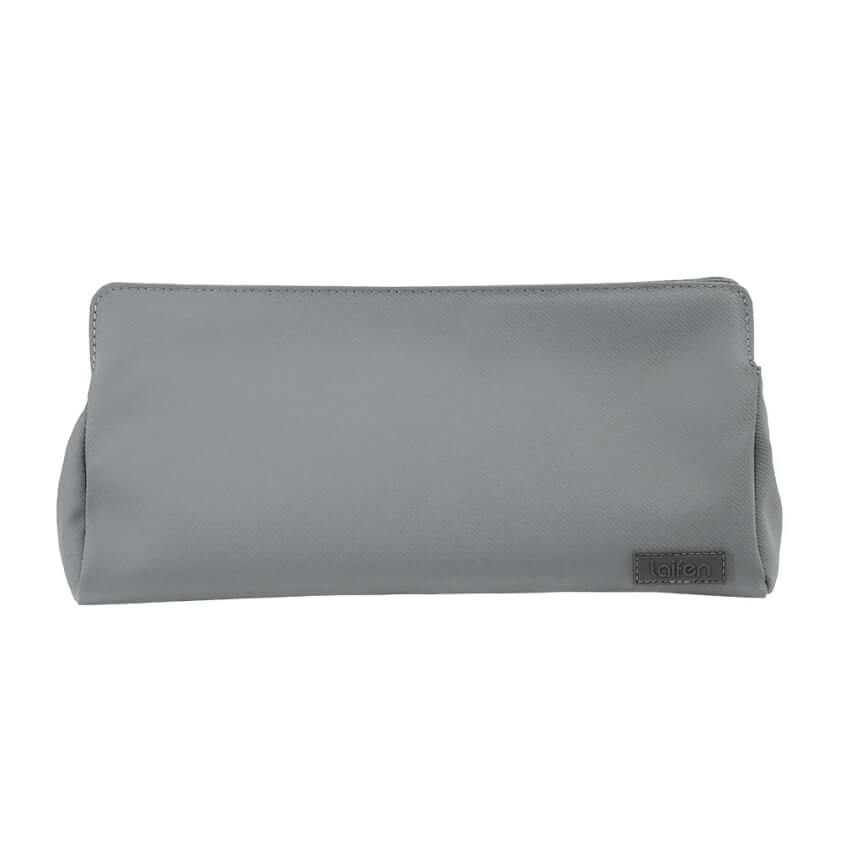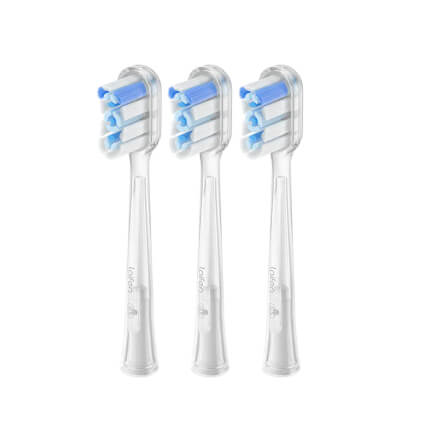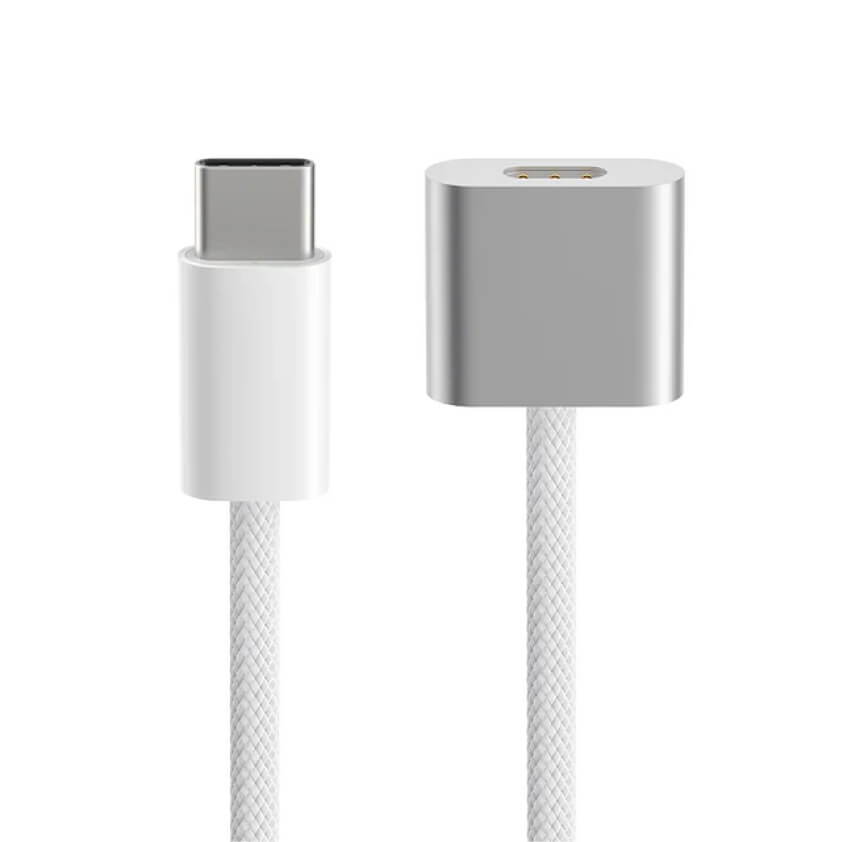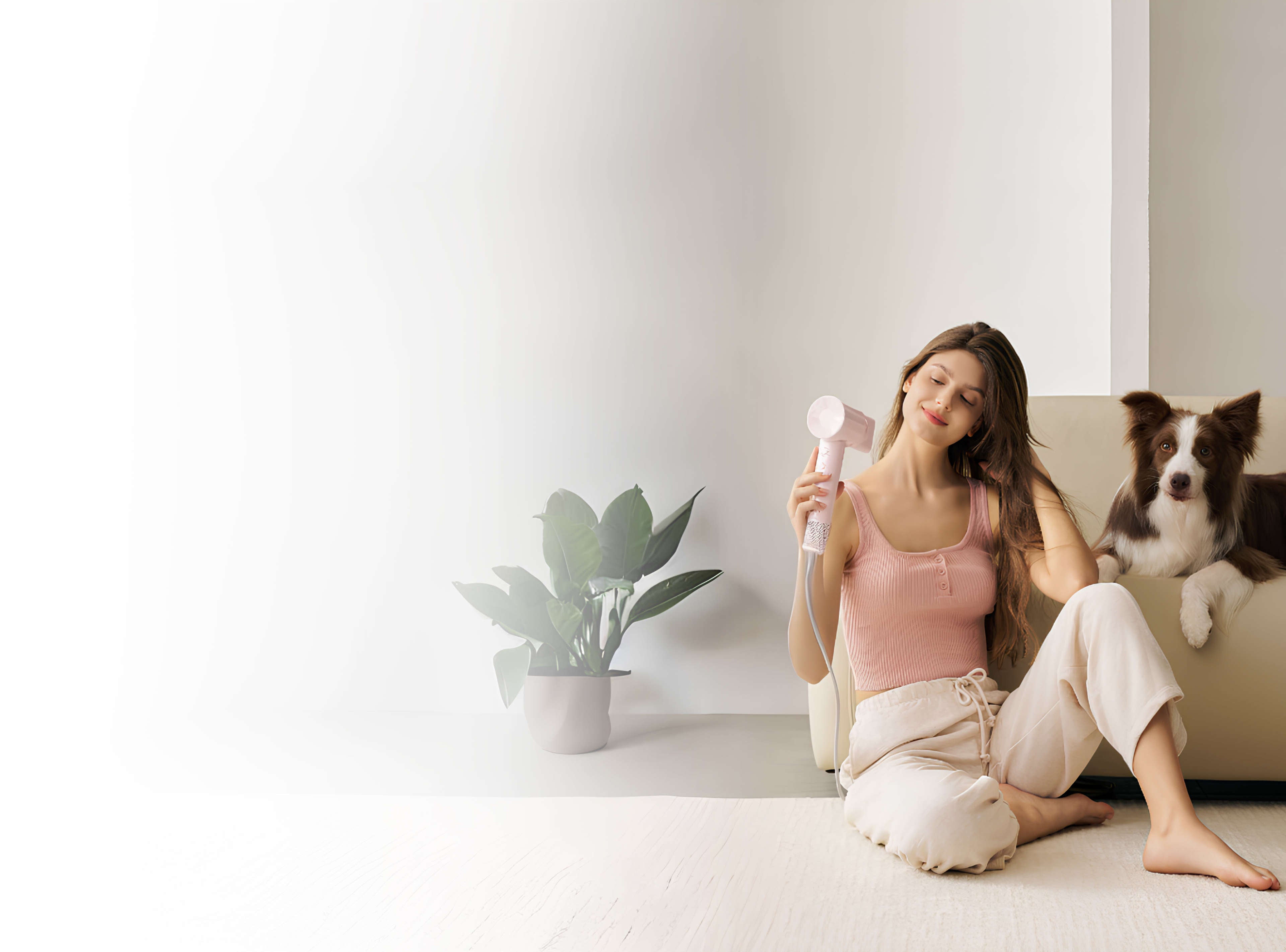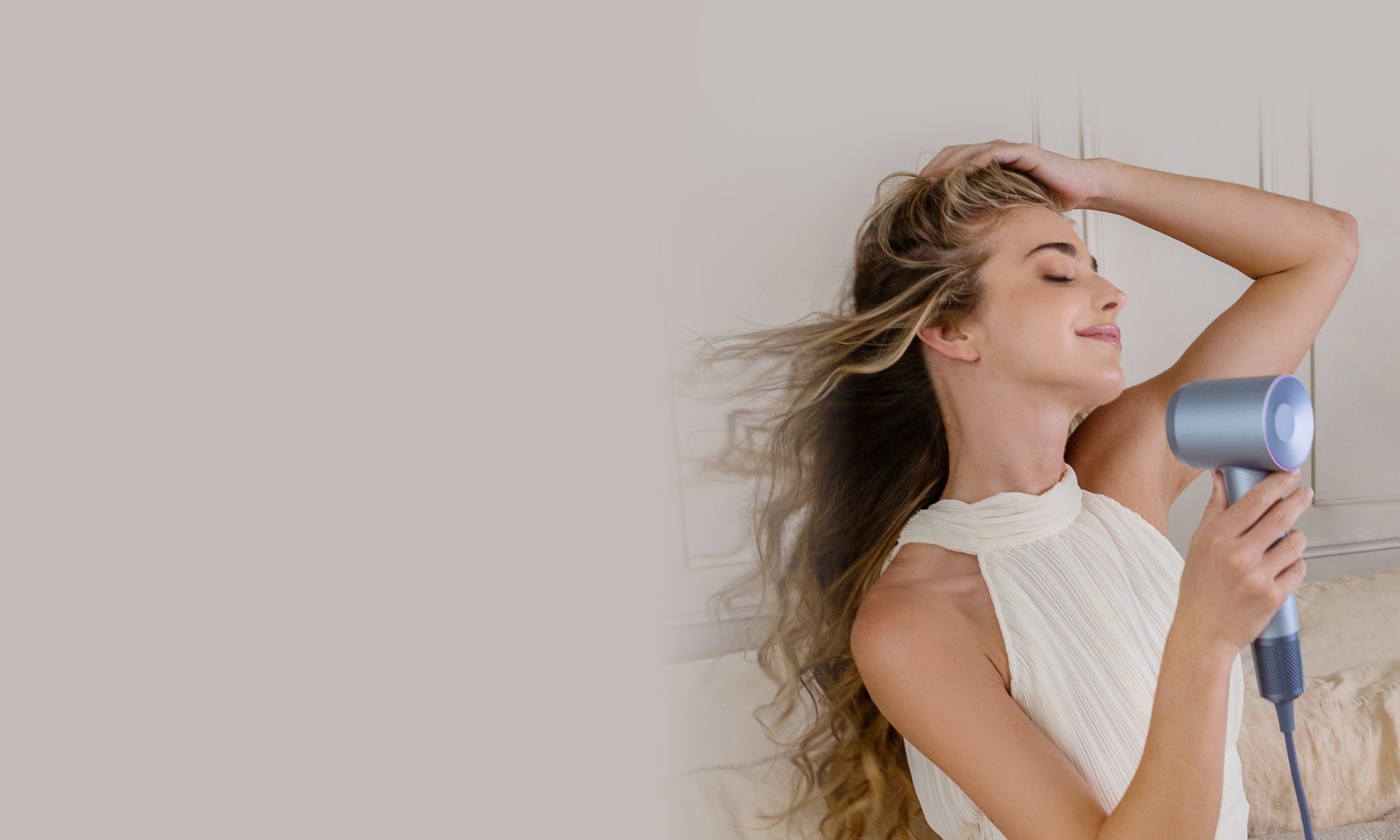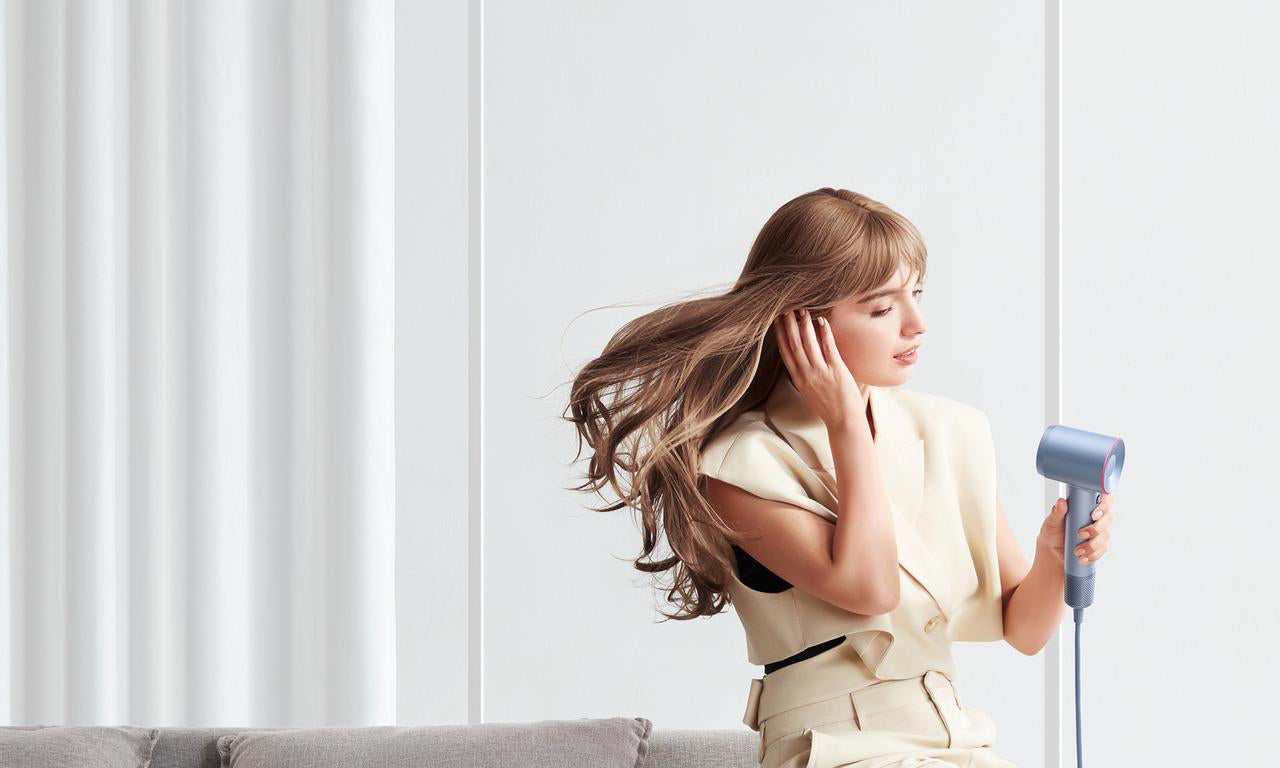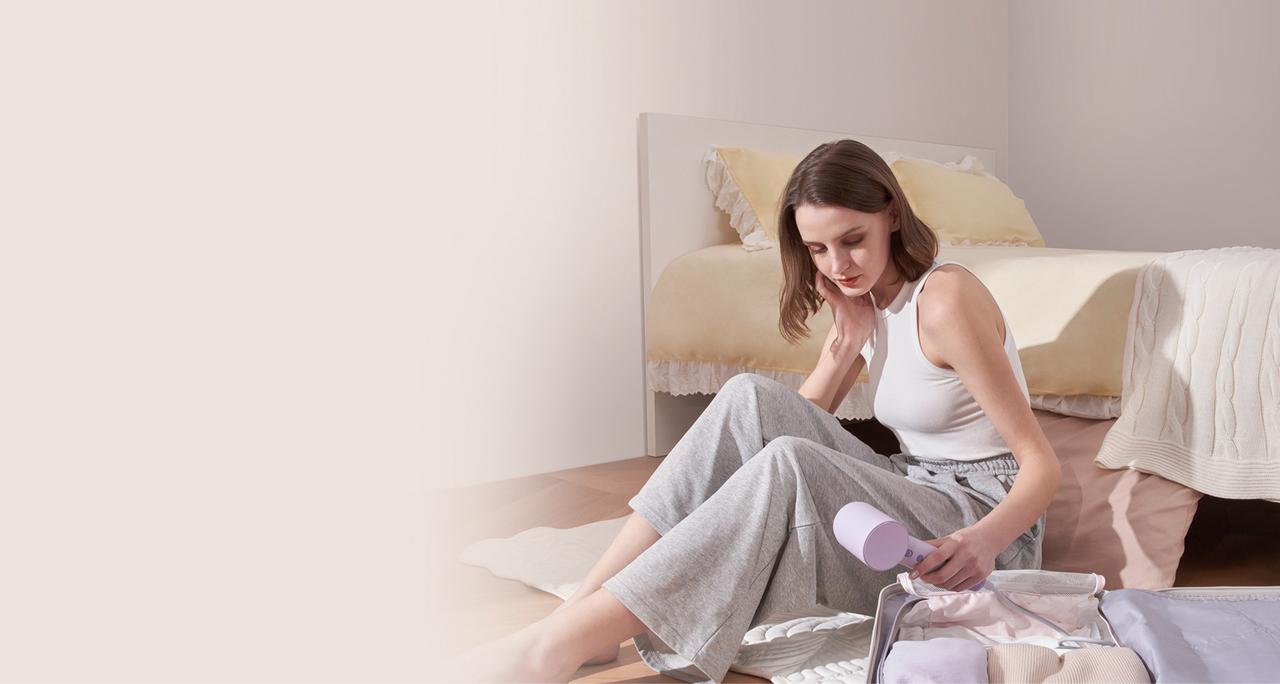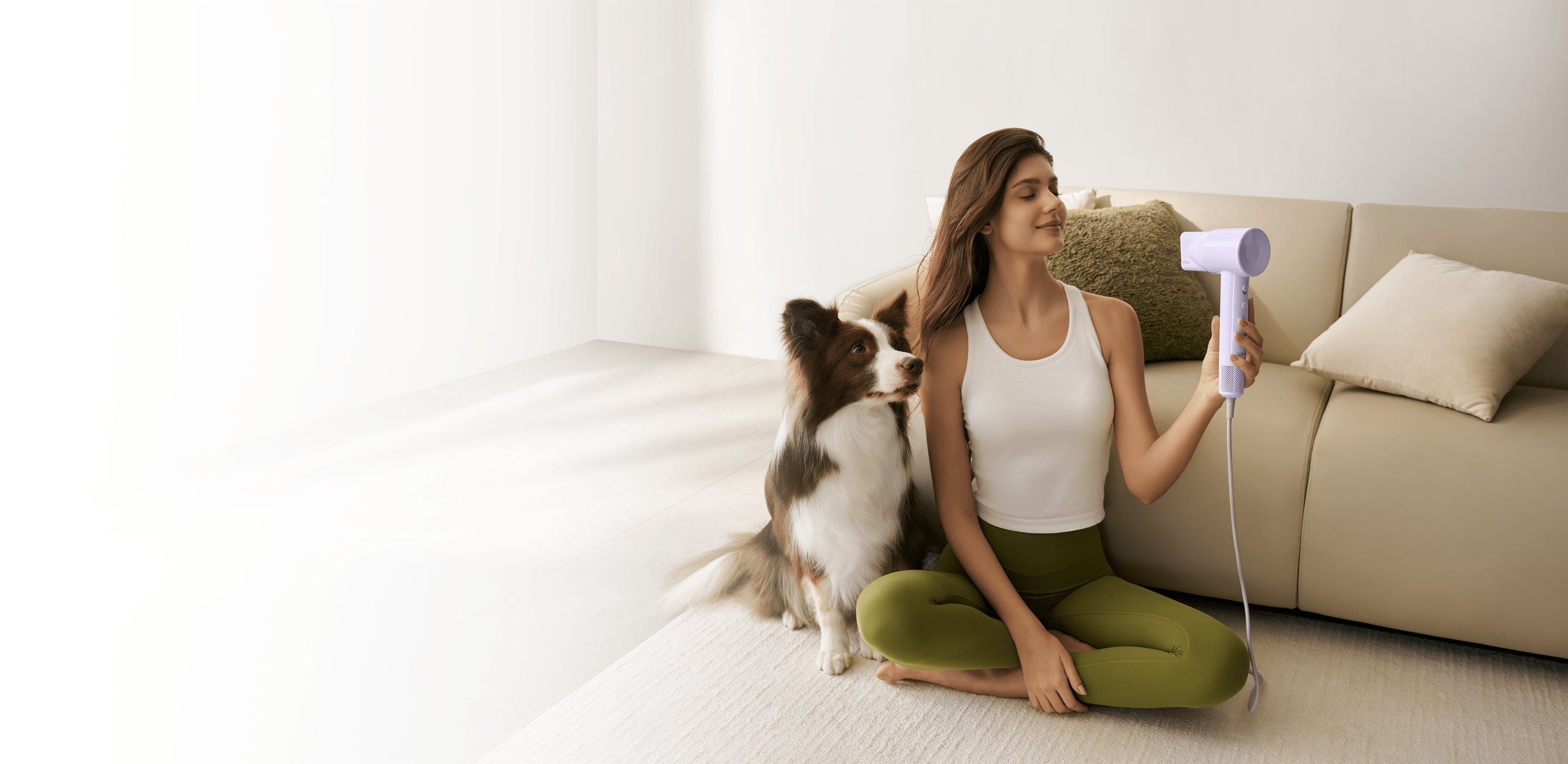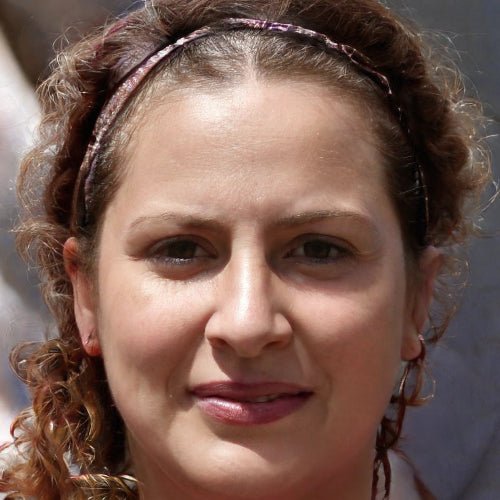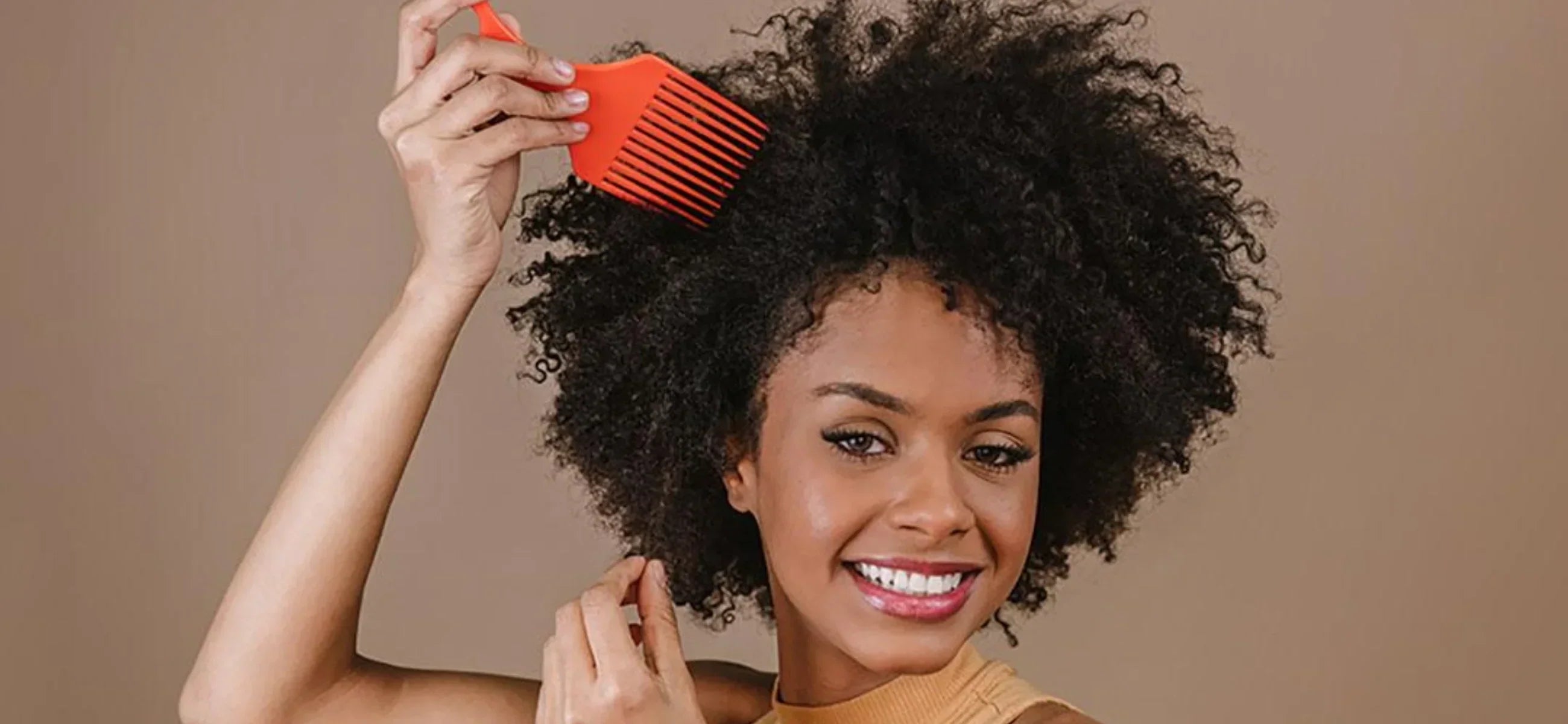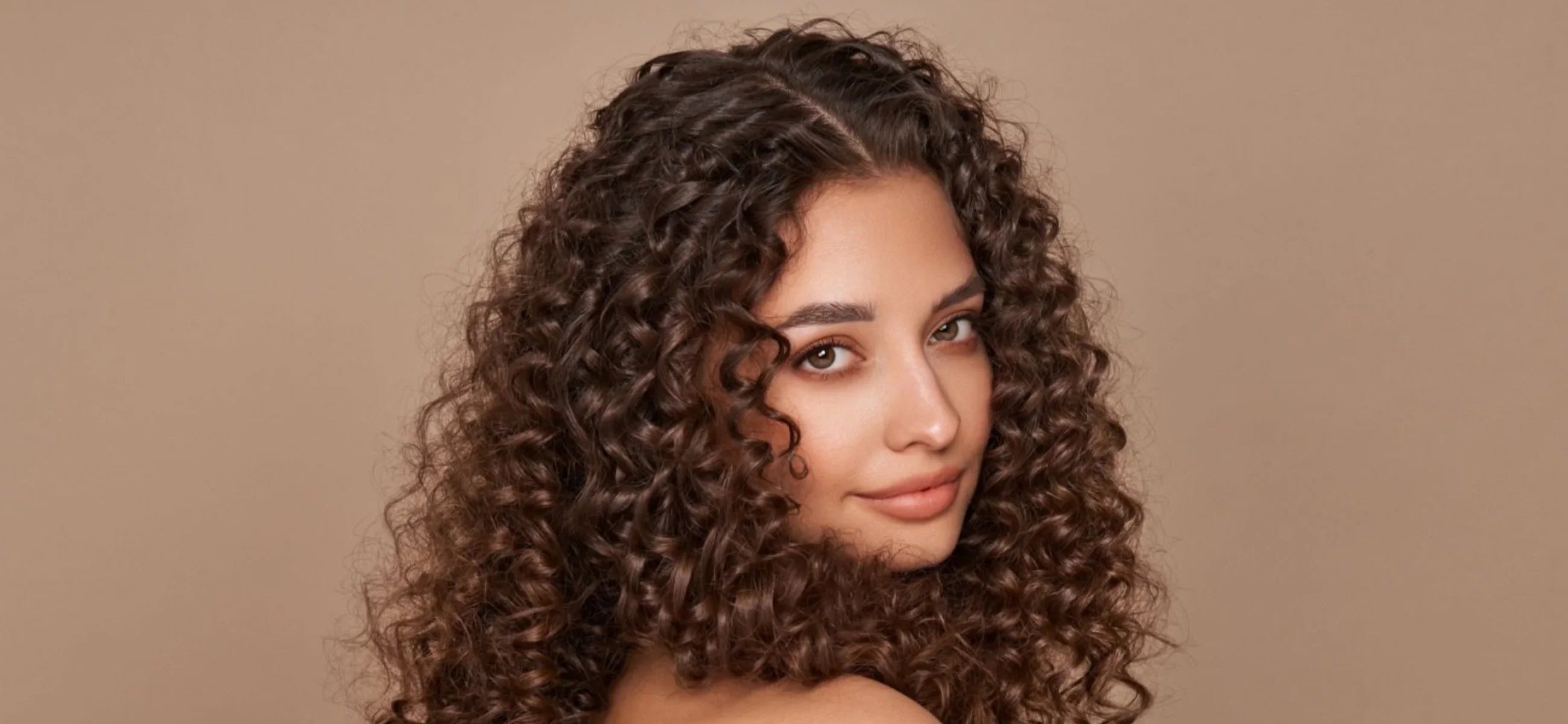
In this article
Curly hair is defined by its springy, S- or spiral-shaped strands that grow in loops, not waves, and that twist gives it both its charm and its challenges. Unlike wavy hair, curls have more volume, more bounce, and often, more personality. They absorb moisture differently, demand richer care, and offer endless style versatility from tapered cuts to layered curls and bold curly bangs.
In 2025, more people are embracing short, statement curls to stand out with confidence and ease. But great curls don’t happen by accident, they’re the result of a consistent, intentional routine that respects the curl’s unique shape and needs.
Curly hair VS Wavy hair
|
Category |
Curly hair |
Wavy hair |
|
Pattern |
Defined spirals or ringlets that grow in curves, not lines. |
Loose “S” shapes that bend but don’t twist into full curls. |
|
Porosity |
Often highly porous. It absorbs moisture fast, but loses it just as quickly. |
Less porous. It holds onto hydration better, but risks buildup if overloaded. |
|
Moisture needs |
Needs rich, nourishing care. |
Prefers lightweight moisture. |
|
Volume + density |
Naturally voluminous, bold silhouette. |
Can be flatter at the roots, especially without layering. |
|
Shrinkage |
High shrinkage—hair appears shorter than it is. |
Minimal shrinkage—length stays more visible. |
|
Frizz level |
Prone to frizz due to texture and porosity. |
Frizz happens, but is easier to manage. |
|
Styling range |
Twist-outs, curly cuts, shingling, diffusing. Lots of creative options. |
Air-dried waves, sea salt texture, soft bends. Less defined but versatile. |
|
Care routine |
Requires consistent steps: hydrate, seal, protect. |
More forgiving, but benefits from regular hydration and gentle handling. |
|
2025 trends |
Bold cropped curls, sculpted shapes, curly bangs. |
Effortless mid-length waves, layered cuts with movement. |
Types of curly hair: Know your curls
What is your curl hair type? Find it based on more details.
|
Curl type |
Know your curls |
|
3A – Loose spirals |
3A hair forms soft, elongated spirals with a silky surface that reflects light easily. But its open curl structure means moisture slips away quickly. It prefers airy hydrators, light leave-ins over dense butters. |
|
3B – Defined ringlets |
These curls are tighter, spring-loaded, and full of personality, each one acting like a coil with memory. 3B hair is more porous than 3A, meaning it absorbs product quickly but loses hydration just as fast. To thrive, it needs layered moisture: humectants first, then emollients to lock it in. The strands are often a mix of textures, which can make even application and sectioning essential to maintain consistent curl definition. |
|
3C – Tight corkscrews |
3C curls are densely packed and pencil-sized, coiling close to the scalp with bold volume and visible shrinkage. This type is highly porous and quick to dry out, requiring rich, creamy stylers and sealing oils to stay supple. |
How to curl hair naturally
Follow our steps to make your hair curly without using too much time.
1. Twist-outs
What you need: Water-based leave-in, curl cream, wide-tooth comb, time
How it works: Wet hair is malleable and reshapes as it dries. Twisting damp strands gives them a blueprint to follow. The tighter the twist, the tighter the curl memory.

Steps:
1. On damp, detangled hair, apply a leave-in and curl cream generously.
2. Section hair and two-strand twist each piece firmly but not tightly.
3. Air-dry or wrap overnight.
4. Once fully dry, untwist.
5. Separate and lift at the roots to add shape.
2. Heatless braids
What you need: Lightweight styling foam, satin scrunchies, optional setting spray
How it works: Hair contains hydrogen bonds that shift when wet. Braiding stretches these bonds into gentle waves, then fixes them in place as moisture evaporates.
Steps:
1. Lightly mist clean hair with water.
2. Distribute a light foam or mousse evenly.
3. Create three or more loose braids depending on your hair’s thickness.
4. Secure ends and sleep overnight.
5. In the morning, release, finger-comb, and let the waves speak for themselves.
3. Plopping
What you need: Curl-defining cream or gel, cotton T-shirt or microfiber towel
How it works: Plopping reverses the usual drying process. Instead of weighing down wet hair, it bundles curls upward, helping them form in their natural pattern before frizz can interfere.

Steps:
1. After cleansing, apply curl cream or gel to soaking wet hair.
2. Lay a cotton T-shirt flat, flip hair forward, and wrap.
3. Leave wrapped for 30–45 minutes.
4. Unwrap and let curls finish air-drying undisturbed.
Curly hair care routine
Here are essential tips for a healthy, effective curly hair care routine.
1. Cleanse without stripping the story
Curly hair holds onto oils for dear life, and with good reason. Its spirals make it harder for sebum to travel, leaving ends dry and prone to frizz. Choose a sulfate-free cleanser that clears buildup without erasing the moisture map your curls rely on.
2. Condition with weight and intention
Curls are naturally more porous, which means they’re thirsty but quick to let go. A rich, slip-heavy conditioner acts like scaffolding and gives fragile curl structures the support they need to spring back into shape after every wash.
3. Diffuse with precision, not force
Direct heat flattens curls by disrupting internal hydrogen bonds. A diffuser works differently, which cradles each curl in a cocoon of airflow. The Laifen SE Hair Dryer, with its intelligent heat control and whisper-quiet motor, lets you dry with volume and definition intact. Read on How to Manage Your Curls with a Hair Dryer.
4. Style in layers, not in rushes
Styling curly hair is a matter of sealing in what you just gave it. Begin with a water-based leave-in for hydration, follow with a curl cream to shape, and finish with gel or oil to lock the curl in place.
5. Sleep like your curls are listening
Overnight, friction breaks curl clusters and unravels definition. Wrapping hair in silk or satin creates a low-friction zone where moisture stays in and structure stays safe. A loose pineapple wrap lifts curls off your neck and preserves volume at the crown.
6. Minimal touch, maximum integrity
Each curl is an architectural form held together by a balance of moisture, structure, and intention. Once styled, let them be. Handling dry curls breaks them apart and invites chaos. Sometimes, the best care is stillness.
Choosing the best curly hair products
Choosing curly hair products is understanding what your curls absorb, what they repel, and how they hold shape over time.
|
Step |
Product type |
What to choose |
Reasons |
|
① Cleanse |
Sulfate-free shampoo |
Low-foaming, pH-balanced, with moisturizing agents |
Curly hair’s structure traps less oil, so harsh cleansers over-strip and weaken the cuticle. A gentle cleanse respects the scalp and protects natural oils. |
|
② Replenish |
Rich conditioner |
Emollients + slip (e.g. shea butter, behentrimonium chloride) |
Bends in curly strands cause friction and breakage. A slippery, rich conditioner restores elasticity and eases detangling. |
|
③ Prime |
Leave-In conditioner |
Lightweight, humectant-based, water-soluble |
Curly hair loses moisture fast. A leave-in boosts hydration before styling and helps keep curls pliable throughout the day. |
|
④ Define |
Curl cream or gel |
Curl-specific hold, no drying alcohols, flexible finish |
These shape and protect the curl pattern as it dries. Creams nourish; gels seal—choose based on density and desired hold. |
|
⑤ Seal |
Oil or butter |
Natural, non-silicone oils (like argan, avocado) |
Oils don’t add moisture—they seal it in. The final step locks hydration into the strand and shields against frizz. |
Haircuts for curly hair men
Want to change your look into curly hair or a different curly hair style, you can read this part.
1. Curly fringe with drop fade
Short-to-medium curls, square or angular faces

Here, curls are guided forward, allowed to fall just past the forehead, creating softness at the brow. The drop fade follows the skull’s shape behind the ear, adding contour and focus. This balance of curve and edge flatters strong jawlines and lets the curl pattern become the highlight.
2. Tapered Afro fade
Medium-length curls, round or oval faces
This cut preserves volume where curls thrive while gradually reducing bulk toward the neck and temples. It respects the natural lift of curls while giving the face a clean, vertical frame. The taper prevents puffiness at the base, where density tends to overwhelm without structure.
3. Long layered curls
Long curls, oblong or diamond-shaped faces

Curls that fall past the chin need intentional shaping. Layering prevents pyramid bulk and gives the strands space to coil and breathe. This cut reduces heaviness at the sides, which can pull curls downward. Instead, it lets each curl land where it wants to.
4. Textured crop with skin fade
Short curls, round or heart-shaped faces
Cropped curls offer control without confinement. This cut leaves length at the crown for touchable texture, while the skin fade creates a sharp, weightless frame. It’s designed to make the curls stand out by reducing visual noise around them.
5. Curly mohawk (Frohawk)
Tight curls, oval or triangle faces
Curly mohawk celebrates verticality. By tapering the sides or fading them to the skin, the eye is drawn up, highlighting natural volume and curling memory through the center. Keep curls hydrated to maintain structure and avoid collapse at the crown.
Hairstyles for curly hair women
Here are selected hairstyles for women with curly hair. Choosing your next look based on your hair length and face shape.
1. Curly curtain bangs with layers
Medium to long curls, oval or heart-shaped faces

This style combines soft, face-framing curtain bangs with airy layers to reduce bulk. It works with the curl’s natural volume while guiding strands away from the face. The bangs open the features without overwhelming them. Best styled when curls are well-moisturized.
2. Rounded bob for defined curls
Short curls, square or angular faces
Cut just below the jawline, this bob maintains a rounded shape that mirrors the curl’s natural spiral. It softens sharp features while keeping bounce and volume balanced. The shape eliminates heaviness at the ends and enables curls to sit in symmetry.
3. Long layers with deep side part
Long curls, round or fuller faces
Long layers remove weight while adding motion. Paired with a deep side part, this style brings visual lift and asymmetry that flatters rounder face shapes. It lets curls move freely while offering built-in styling flexibility.
4. Pineapple updo
Medium to long curls, all face shapes

A high, loose ponytail at the crown, this is a visual celebration of curl texture. Curls spill forward like a fringe, framing the face softly. It prevents flattening overnight and doubles as an effortless day look. Satin scrunchies help maintain curl pattern without creasing.
5. Shoulder-length shag with layers
Medium curls, oval or oblong faces
This modern shag layers curls at every level creating a naturally tousled, lived-in texture. The layered structure allows for more even volume and lightness around the ends. Ideal for curls that need definition without too much weight.
The bottom line
In structure, curly hair is a study in contrast, which is strong in volume, yet delicate in its need for care. Its spirals shape how your hair absorbs, holds, and responds. Curly strands are more porous by design, which means they’re more expressive but also more vulnerable. This guide is understanding their nature and working with it. When you feed them moisture, treat them gently, and shape with purpose, curls return the favor in definition, bounce, and resilience.
FAQs
What is burst fade curly hair?
Burst fade curly hair combines a fade that curves around the ear with defined curls on top. It’s clean, stylish, and gives contrast between sharp edges and natural texture.
Is short curly hair in style in 2025?
Definitely. In 2025, short curly styles like curly pixies, cropped afros, and tapered cuts are everywhere.
How to choose a leave-in conditioner for curly hair?
Look for leave-ins with hydrating ingredients like shea butter, coconut oil, or aloe. Avoid sulfates and silicones. Choose one based on your curl type that is lighter for looser curls, richer for tighter coils.
How to get curly hair quickly and naturally?
Apply a curl activator or mousse to damp hair, scrunch upwards, and let air dry or diffuse. Try braiding or twisting overnight. These quick, heat-free methods enhance natural curl patterns fast.
What is the difference between curly and coily hair?
Curly hair forms loose to tight spirals, often shiny and springy. Coily hair has tighter, zigzag or Z-patterned strands with more shrinkage and fragility. It requires more moisture and gentle handling.

